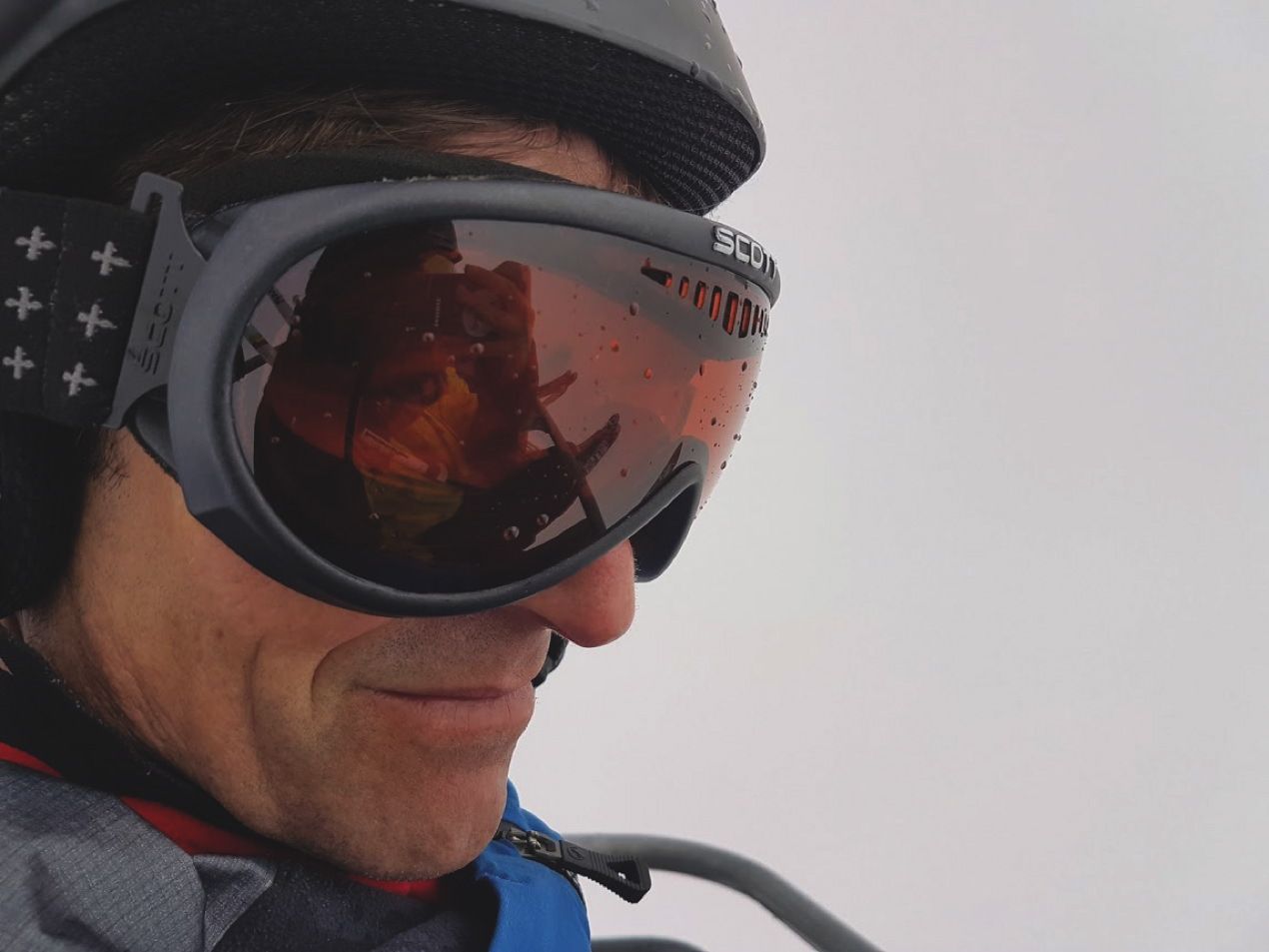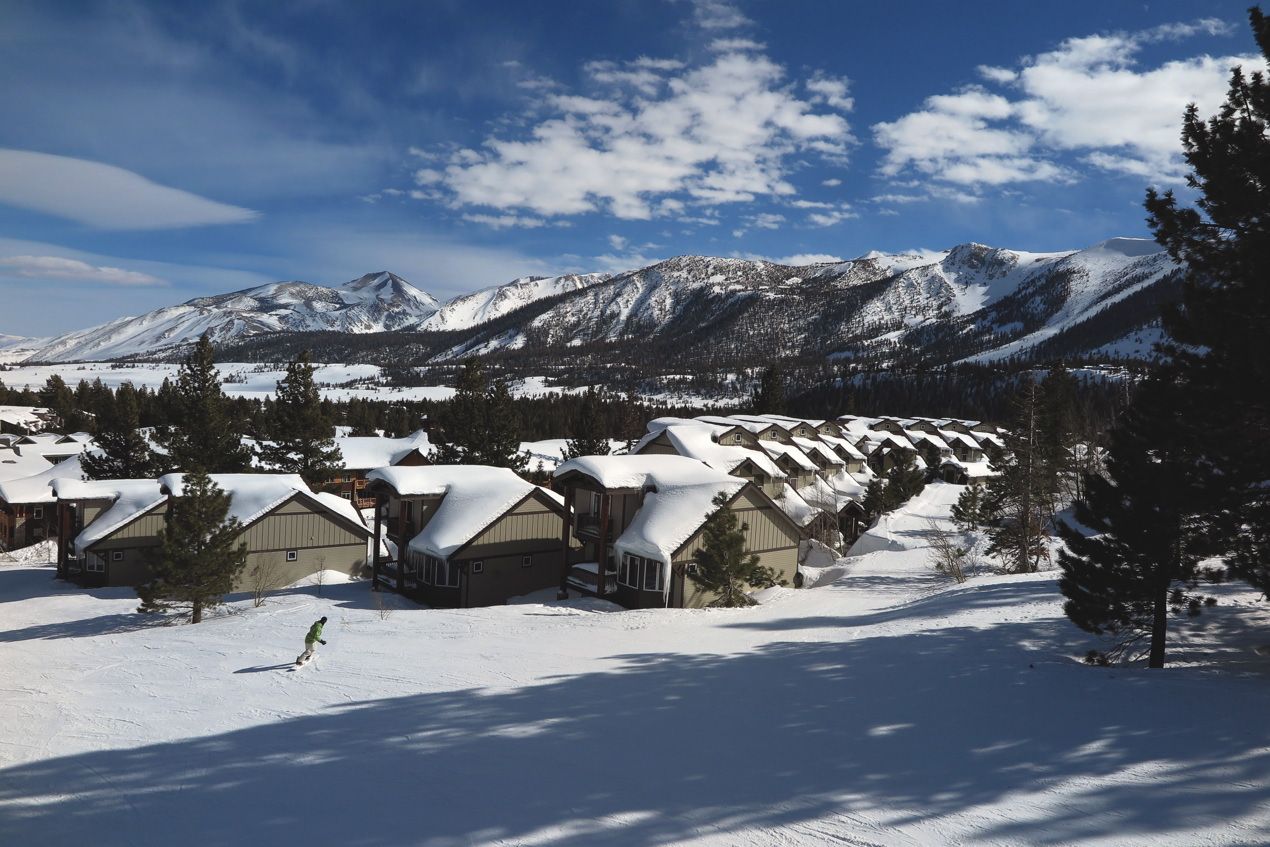This business called snow
When journalist Giles Whittell was posted to LA it wasn’t showbiz that caught his attention but the otherworldly Californian snowstorms he witnessed. Now he’s in search of the snowiest place on earth
The other day an email like a fat snowflake landed in my inbox in the middle of a meeting.
“Big snow gonna dump in Mammoth.”
Thanks bro. Really. The meeting droned on but I might as well have been on the moon. Afterwards, a few clicks took me to the Main Lodge webcam at Mammoth Mountain, California. The lodge was in darkness because the West Coast is eight hours behind GMT, but its lights were strong enough to pick out individual flakes – flakes that were part of the kind of blizzard I knew from a past life, the kind you just don’t get in Britain.
Halifax was buried under six-foot drifts that wouldn’t have been out of place in Siberia
Californian snowstorms are like nothing else I’ve encountered in decades of obsessing about snow. The big ones roll in from the Pacific along what are nowadays called atmospheric rivers, gigantic conveyor belts of water vapour that start as far away as Hawaii. They can be 100 miles wide and 2,000 miles long, carrying 15 Mississippis’ worth of moisture. When they make landfall they drench the coast with rain, but 120 miles inland, where the Sierra Nevada range rises from the Great Central Valley, they’re forced up to 11,000 feet and their prodigious cargo turns to snow.
When you’re caught in the middle of this process there’s not much you can do but sit and marvel at it. In 1968 a young snow surveyor called Douglas Powell did that and a bit more. He was measuring snow depths in Big Whitney Meadow beneath the highest peak in the continental US when the storm struck. About 12 hours into it, he ventured out of a cabin built among trees on the edge of the meadow.
“Visibility was zero,” he wrote later. “Breathing was nearly impossible [and] survival demanded an immediate retreat into the shelter of the lodgepole pines, with gratitude for still being alive. What living creature could survive out in that wind and snow?”
What creature? Well, Powell collected himself for a moment and then heard something unmistakeable. “Above the howling of the wind, a coyote, probably within 100 feet of me, let loose a long, reverberating call.” Without thinking he replied with a howl of his own. “And for the next 15 minutes we serenaded each other. I do not believe the coyote took me for another coyote, but maybe it sensed, as I did, we were kindred spirits in this world of white.”
Some 25 years later I got lucky. I was posted to LA, where correspondents for British newspapers are supposed to be interested in showbiz, forest fires and earthquakes. For me, snow took precedence and I was spoiled rotten. Stories landed me in the path of blizzards in the Sierras, the Rockies and the mighty Oregon Cascades. They rocked my world, which had been formed by the deep, unsatisfied yearning for snow you tend to get in overheated London.
Anywhere north of junction 25 on the M1, it’s different. I get that. In the great winter of 1947, Halifax was buried under six-foot drifts that wouldn’t have been out of place in Siberia. I’ve seen the Walna Scar road from Coniston to Seathwaite turned into a mile-long toboggan run, and even now snow still comes reliably to the peaks, the wolds, the moors, the dales and of course the knobbly country between Barrow and Carlisle. But the fact is the whole island of Great Britain is bounded by tepid waters and low-lying by global standards. We are spared – or denied, depending on your point of view – the deep, continental cold and the big topographic uplift that brings serious snow elsewhere.
The blizzards I encountered in America planted in my head the idea of a book on snow, and that in turn became a quest – a quest to identify the ultimate snowstorm, or, as I came to think of it, the ultimate snow event. When that turned out to be a different task from locating the snowiest place on earth I decided to do both.
The most spectacular snowstorms in the first 4.5 billion years of planet Earth’s life probably occurred around 650 million years ago. This guess is based on the Snowball Earth theory, which says all the world’s oceans were once entirely frozen over, all the way to the Equator. Getting to that point would have been more about freezing than snowing, but getting back from it to something resembling present-day Earth could have involved snowstorms lasting centuries.

If that seems odd – if it seems that a long melting process should involve less snow rather than more – you have to bear in mind GCSE physics. Warm air holds more water vapour than cold. This applies even when “warm” is a relative term and still below freezing – in which case much of that water vapour will fall as snow.
The implications are important for 21st-century snow addicts. The world’s climate is warming, but as it warms it may bring more intense snow events before it stops bringing any at all. Autumn and spring will eat away at winter from each end, but wherever there are still sustained periods of below-freezing temperatures those places could be seriously snowy.
“We’re going to have some big blizzards,” Kevin Trenberth of the US National Center for Atmospheric Research told me. His evidence: since the 1970s, average sea surface temperatures have risen by 0.6 degrees C. That means more evaporation and an extra 500 cubic kilometres of water in the atmosphere – and what goes up must eventually come down, either as rain or snow.
The bad news is that, on current trends, rain wins in the end. Another expert, Raymond Pierrehumbert, who is now a physics professor at Oxford, once modelled future snowfall for northern Wisconsin because cross-country skiers there were reporting thinner snow cover year by year. By his calculations the last big blizzard over the Midwest will happen around the middle of this century, “and then it gradually sort of peters out”.
What’s a snow addict to do? Or anyone bothered by climate change, come to that? Despair is surely not an option. It’s just too miserable. It’s bad enough that a white Christmas is nowadays a virtual impossibility. The idea that my kids might come to think of snow as I think of the dodo is unacceptable. We have to act, and amazingly it’s Britain that has shown the way. Government figures from March 2018 showed UK carbon emissions were lower than in 1890 and 38 per cent lower than in 1990. How so? We’ve been closing coal-powered power stations. It’s that simple. And if China and India could be persuaded to do the same the planet as a whole would be back in business – snow-business.
It’s a big “if”, but you have to live in hope. In the meantime, the changing climate is doing strange things to snowfall patterns. Back in 1921 a monster storm from the east collided with the Rockies and dumped 76 inches of snow in 24 hours on a measuring station high above the town of Boulder at a beauty spot called Silver Lake. That is nearly two metres. For nearly a century that held as the 24-hour record. Then, in 2015, the Italian hill town of Capracotta was buried under two and a half metres of snow in 18 hours flat. Capracotta is not even in the Alps. It’s on the same latitude as Rome.
The idea that my kids might come to think of snow as I think of the dodo is unacceptable
This got me thinking. If a small town in the Apennines could break snow records, where else could? Maybe there were places overlooked by snow-watchers accustomed to focusing only on the obvious contenders, which for as long as anyone can remember have all been in the western US and Japan. A web search brought me to Stormtrack, a forum for extreme weather enthusiasts, most of them American. One of its users, Matthew Clarkson, had been wondering the same thing. He’d created a computer model to locate the snowiest place on earth.
Clarkson’s approach had three steps. First, he itemised the main requirements for snow, including proximity to a large body of water (to provide water vapour) and high ground (to force it upwards and cool it down). Then he came up with a shortlist of snowy places from southern Alaska and northwest Washington State to the northern uplands of Hokkaido. This gave him a spreadsheet into which, finally, he plugged data on temperature, humidity, prevailing wind and atmospheric pressure, all of which can be obtained these days in real time, direct from the world’s most advanced weather satellites, at the click of a well-aimed mouse.
To liven things up, Clarkson added a couple of wildcards to his list. These included a towering volcano in northern Colombia called Pico Cristobal Colon. It’s barely 50 miles from the hot southern shore of the Caribbean, but it rises to over 5,000 metres and its summit cone is always covered in snow.
Once the data was all entered on the spreadsheet, Pico Cristobal Colon delivered a surprise. The computer said it was the snowiest place on earth – not by a whisker, but a mile. Clarkson’s model, and others, indicated that it was frequently getting up to two metres of snow a day, which is as much as some ski resorts can count on in a season.
This felt like a discovery – a snow addict’s El Dorado. I made enquiries about visas for Colombia. Thinking that even the search for the snowiest place on earth wouldn’t justify being kidnapped, I researched Pico Cristobal Colon for past terrorist activity. There were risks, but the idea of looking out over the Caribbean from a place five vertical kilometres up that I would nominate as the snowiest on earth was irresistible.
Then, a message. It came from an academic based at Bard College in upstate New York. He’d been following my correspondence with Matthew Clarkson on Stormtrack and was worried that I was going to make a fool of myself. There was no way Pico Cristobal Colon could be that snowy, he said. Isolated volcanoes might stick up into the stratosphere and collect enough snow to turn their upper slopes white, but unlike long mountain ranges they can’t slow down whole weather systems and force them to release their payloads of moisture in a proper dump. Any computer model that failed to take this into account was likely to be wrong.
I was crestfallen, but only for a moment. My new mentor pointed in a new direction. The snowiest place on earth, he said, had been discovered in the 1990s by a team of Japanese scientists camped on the upper Tyndall Glacier in Southern Patagonia. They’d drilled ice cores showing an average annual snowfall of more than 17 metres. If this was true, nowhere else on earth came close.
So is it? I don’t know. I haven’t been there – yet. And there are so many variables when calculating snowfall from ice cores that in truth the Japanese scientists probably don’t know either. But the good news is that even as the world heats up, the search for the world’s snowiest place goes on. El Dorado, eat your heart out.
Snow: the biography by Giles Whittell is out now (Short Books, £16.99)

Leave a reply
Your email address will not be published.